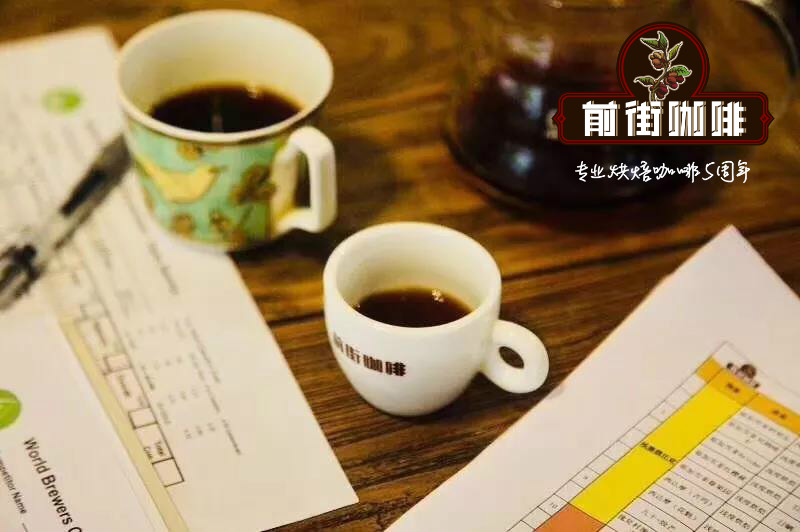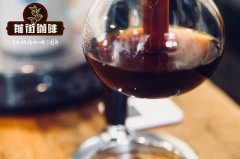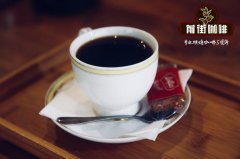Where is the best Arabica coffee beans? Arabica coffee from all over the world

Professional coffee knowledge exchange more coffee bean information please follow the coffee workshop (Wechat official account cafe_style)
If the variety of coffee is divided by biology, it can be divided into Arabica coffee (Arabica), Robusta (Robusta) and Leibirika (Liberica). The main drinking varieties in the world are Arabica and Robusta. Rabrika is often overlooked because of its low yield or poor quality.
Generally speaking, Arabica coffee is mainly used in single or boutique coffee, while Robusta is used to make instant coffee. Although Arabica can be defined as premium coffee and Robusta as secondary, it does not have to be classified in this way, and it is more appropriate to distinguish it according to its own favorite taste. In terms of taste, the United States and Japan drink light coffee made from Arabica more often, while Europe prefers Italian concentrate made from a mixture of Arabica and Robusta.
Arabica Coffee (Arabica): premium coffee beans with first-class flavor and aroma
Arabica is a representative variety of Ethiopia, which is also produced in South Africa, Africa, Asia and other countries, accounting for 7075% of the world's coffee production. Arabica is less resistant to diseases and insect pests, so the highlands are more suitable for cultivation, especially the Arabica coffee beans produced in the highlands above 1500 meters are of the best quality.
The good quality produced by the effort like this, with a balanced flavor, taste and aroma, can be certified as high-grade coffee beans, mainly used in individual coffee or boutique coffee. The three famous Arabica coffee beans, Kona, Hawaii, the Blue Mountains of Jamaica and Yemenmoka, belong to the Arabica variety. Arabica raw beans have a dark, narrow appearance, known as the highest quality of high-quality Arabica varieties, characterized by sweet, sour and aroma and other rich flavor.
Robusta: strong sour taste and strong taste
Robusta is of African origin and accounts for 30% of the world's coffee production. The word Robusta means "tenacity". In fact, this kind of coffee tree is not only resistant to diseases and insect pests, but can survive in any soil, even in the wild. Therefore, it can also be planted in high temperature areas, growing fast and easy to cultivate, and has the advantage of low price, which is mainly used to mix beans or make instant coffee as the main raw material. Some Robusta produced in India, Africa, Brazil and other places have a strong sour taste, high caffeine content and rich taste. Recently, there are also varieties of Arabusta, which mate with Arabica varieties and have better taste and aroma.
The appearance of Robusta is bulging oval, and raw beans are light brown or yellowish brown with grass green and yellow luster. Compared with Arabica varieties, the taste is more fragrant and lighter, with less sour taste and more bitter taste.
Important Notice :
前街咖啡 FrontStreet Coffee has moved to new addredd:
FrontStreet Coffee Address: 315,Donghua East Road,GuangZhou
Tel:020 38364473
- Prev

Introduction of Yega Chuefei Flavor description of Yega Chuefei Baking
Professional coffee knowledge exchange more coffee bean information Please follow the coffee workshop (Wechat official account cafe_style) long ago wanted to write an article on the introduction of Yejashafi coffee, there are several reasons, the core of contemporary coffee. Yegashafi is the core of Ethiopia, the country of origin of Arabica. It is the coffee product that you must know and savor if you like or want to come into contact with fine coffee.
- Next

Introduction of Yega Sheffield Orchard Fruit Orchard Flavor description of Yega Shifei Orchard treatment
Professional coffee knowledge exchange more coffee bean information please follow the coffee workshop (Wechat official account cafe_style) Yega snow berry orchard flavor description: rich berry and fruit wine aromas, sipping with strong strawberry, blueberry with passion fruit, mango and other hot fruit aromas, middle with apricot, peach and grape juice flavor, flower, peach, berry
Related
- Beginners will see the "Coffee pull flower" guide!
- What is the difference between ice blog purified milk and ordinary milk coffee?
- Why is the Philippines the largest producer of crops in Liberia?
- For coffee extraction, should the fine powder be retained?
- How does extracted espresso fill pressed powder? How much strength does it take to press the powder?
- How to make jasmine cold extract coffee? Is the jasmine + latte good?
- Will this little toy really make the coffee taste better? How does Lily Drip affect coffee extraction?
- Will the action of slapping the filter cup also affect coffee extraction?
- What's the difference between powder-to-water ratio and powder-to-liquid ratio?
- What is the Ethiopian local species? What does it have to do with Heirloom native species?

